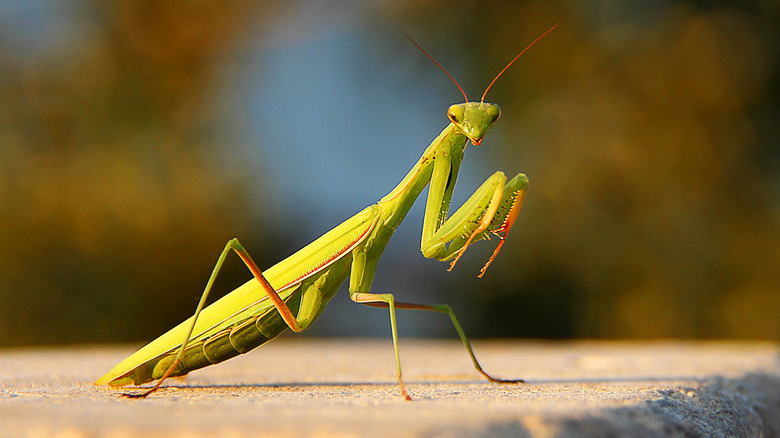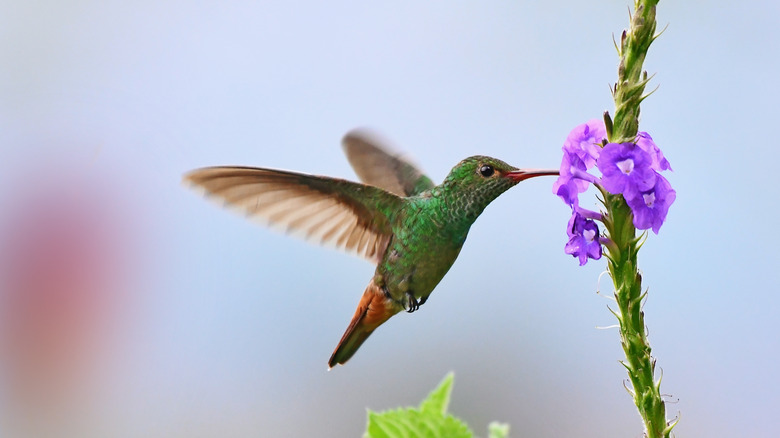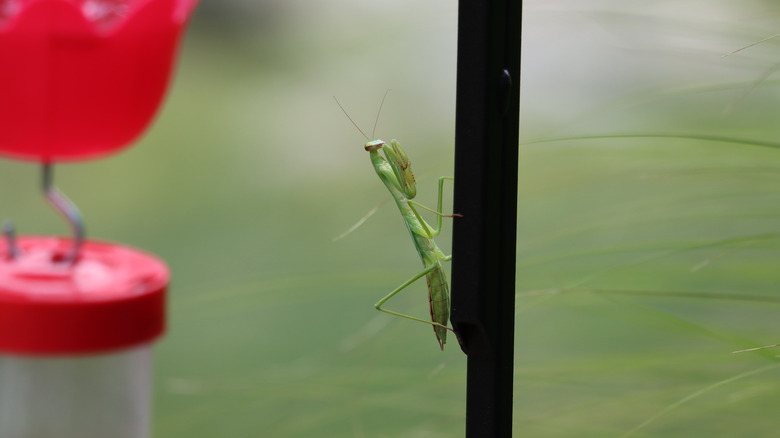Why Seeing A Praying Mantis On Your Hummingbird Feeder Is Cause For Concern
A praying mantis is a fascinating insect. These mantises, part of the mantid family, are often utilized for their carnivorous skills in gardens to keep pests at bay. Though if you are a hummingbird lover, you may want to think twice about encouraging these spiny bugs to your yard or garden. Why? Well, since they're carnivores, small birds like hummingbirds could be on the menu. Although rare, it can still happen. And there's no easier place to snag one than your hummingbird feeder. These are also attractive to mantises because they also love the sugar water goodness inside them — especially homemade nectar, which is surprisingly easy to make.
Even if you don't introduce a mantis to your yard using something like basil in your garden, it's possible they could still be around. That's because many non-native varieties were introduced in the United States during the 1900s as a form of pest control. There are 20 native species of mantids in the country to watch out for in addition to the many invasive kinds, especially if you've got those oh-so-tasty hummingbird feeders.
They are known to eat hummingbirds
Like most predators, mantids go after things that are smaller than they are. Or, in the case of hummingbirds, the same size. According to The Wilson Journal of Ornithology, it isn't uncommon for these insects to become bird preying mantises. In fact, after seeing 147 incidents of mantids catching small birds, over 70% of which happened in the United States, they're often seen snatching hummingbirds specifically, per the study. Praying mantises are also known to attack other insects and small animals like frogs and fish.
Dr. Joshua Martin of Case Western Reserve University explained that these insects may or may not attack large prey unless they've gone long without food. "As a mantis gets hungry, as the time from its last meal gets longer, this 'idea' of what constitutes prey gets broader and broader, and she'll strike at larger targets," Martin told the National Audubon Society. What can make a hummingbird feeder mantis attack more disturbing is that the insects are known for eating the birds' brains.
How to keep mantises away from feeders
Since there are so many kinds of mantises all over the country, it's easier to take measures to keep them away from your feeders than to keep them away completely. One more labor-intensive way is to watch for the insects and capture them when you see them. Once you have one in your possession, you take it away from your yard to release somewhere else. Feeders with moats to keep ants away will also make them less hospitable for mantises, too.
Though one of the easiest ways to stop mantises from using your feeder as a stalking location is to place them away from trees. Since mantises love trees and shrubs, placing a feeder away from them will make it less appealing to leave the comfort of their hiding spot. Ultimately, it's important to remember that these mantids play an important part in the ecosystem so insecticides aren't a great idea. "Mantises are probably eating far more pestiferous insects [than hummingbirds] while also being eaten themselves by other birds," Dr. Gavin Svenson, head of invertebrate zoology at the Cleveland Museum of Natural History told the National Audubon Society. Prevention versus total eradication seems like the ideal solution to protect the hummingbirds while letting the mantids do their pest control job.


